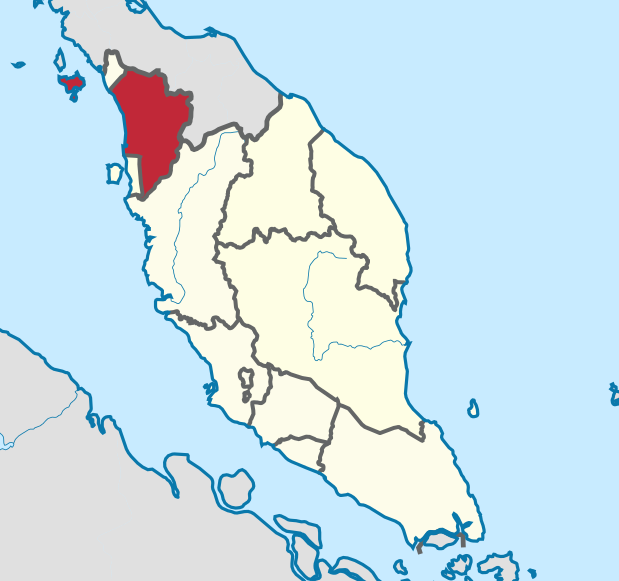How did Kedah get its name? The history is more complicated than you think

- 758Shares
- Facebook674
- Twitter11
- LinkedIn15
- Email16
- WhatsApp42
PS: If you’d like more stories like this, please subscribe to our HARI INI DALAM SEJARAH Facebook group ?
Kedah as we know it today has a long and illustrious history. In fact, some historians have claimed it is the OLDEST civilisation in South East Asia. When you’re that old, chances are, you’ve gone through ALOT, and in ancient times, it was as if Kedah had multiple identities with different people calling it different things.

Sailors and travelers gave their own names for this state and there were documents that told the story of the evolution of Kedah’s name. They also left their own artifacts behind which later used to prove their existence in Kedah. And being the Pulitzer-award winning journalists that we are (in our dreams perhaps), we did some digging in the Universiti Malaya library and various books to find out more about it, and based on that…

First, the Indians… who couldn’t settle on a name so they used everything

Early in the 2nd Century, there wasn’t much in Kedah. But it was conveniently located, making Kedah was the first point where the Indian sailors were expected to make their first landfall in Southeast Asia after crossing the Bay of Bengal. Since it was a strategic place, they built a trade port to trade and to spread their influence. This gave Kedah a Hindu and Buddhist history, where you can still see the influence in Kedah’s art and architecture.

Now, you might think this was a long time ago, but the Sanskrit influence is strong… they might have been responsible for naming other places in Malaysia like Muar and Cheras! As for Kedah, the earliest mention we could find was in the 2nd century Tamil book that refers to KALAGAM.
But then in the Indian epics, South Indian inscriptions and ancient Indian love letters (jk), Kedah was also known as KATAHA. This name was mentioned in many other ancient literary works.
“There are two further references to KATAHA in Indian epics. The Samaraiccakaha written around the middle of the 8th century related voyages to KATAHA-DVIPA and Kathasaritsagara that described the elegance of life in KATAHA, calling it ‘the seat of all felicities'” – Sabri Zain, sabrizain.org
Which meant that it was a fun place to be. On top of trading, there was evidence that Kedah was a source for iron. Ancient peeps found out how to smelt iron and this is probably why they called it KADARAM, because when its translated from Sanskrit to Tamil, it means smelting place or iron.

Some have also thoerised that due to the abundance of elephants in the area at the time, Kedah’s name could have originated from the Sanskrit word for ditch or elephant trap – KHEDDA.

Then one Chinese guy powerpower learned Sanskrit and translated even more names
Around the 5th century, when Ancient Chinese dynasties were still a thing, Chinese traders would sail to the Southeast Asian kingdoms for the spice trade and also to explore new areas, so that’s exactly what they did in ancient Kedah. One of these guys you might remember from your history books. I Ching was a famous Chinese-Buddhist pilgrim. At the time, he was doing another one of his rounds around modern-day Indonesia when he decided to stay there for a bit, eventually turning his stay to half a year.

While he was there, he learned Sanskrit (as one does in ancient times). That would come in handy as he dropped by there before continuing to India for more Buddhist pilgrim stuff. But another benefit of Sanskrit was he also came to call Kedah as CHIEH-CHA or KIE-TCHA (depending on your dialect lo), which experts agreed was a transcription of the Sanskrit KATAHA.

Once I Ching was done studying in India, he came back to Kedah and found out that they were now a part of the Srivijaya Kingdom, and started to attract people from around the world, including Arabs which led to the next name change…
And then the Arabs and Merong Mahawangsa evolved it to the name we know today
The Arabs came to town a few years later to trade just like everyone else before them. The evidence that they were in Kedah were found in the form of ancient Arab coins. There were many traveler’s and geographer’s records on Kedah. Some early Middle Eastern traders left descriptions depicting Kedah as a thriving port.
An important 8th century Arab literary work Akhbar-as-Sin wal Hind (Accounts of China & India… just in case yall didn’t know Arabic 😛 ) mentioned Kedah as KALAH and that it was a dependency of Zabaj (Srivijaya) – just like how I Ching recorded. Other names were also used like KALAH-BAR and QAQULLAH. Meanwhile, in the mid-10th century, an Arab traveler and poet, mentioned that KALAH was really pretty with river facilities, markets, and blacksmiths.

And shortly after the Arabs came, a Hindu king (yes, Hindu) called Merong Mahawangsa who came from Rome, sailed on a ship intending to go to China to do some trading. Suddenly, his royal fleet was attacked by a Garuda, a legendary giant phoenix and they crashed on the western shores of Malaya. This was when Kedah was founded because he decided to take over and become the king of Kedah.

His story was told in a Malay literary work, Hikayat Merong Mahawangsa, that was written in the late 18th century. Later on it mentioned that the Sultanate of Kedah started in year 1136 when his descendant, King Phra Ong Mahawangsa converted to Islam and adopted the name Sultan Mudzaffar Shah. This made the Kedah Sultanate the oldest in Malaysia and the first to adopt Islam.
Hikayat Merong Mahawangsa was eventually translated to English and was called the Kedah Annals, which is how we spell and pronounce Kedah today.
Any other Malaysian state or city names that ugaiz want us to cover? Let us know in the comments below.
PS: If you’d like more stories like this, please subscribe to our HARI INI DALAM SEJARAH Facebook group ?
- 758Shares
- Facebook674
- Twitter11
- LinkedIn15
- Email16
- WhatsApp42



